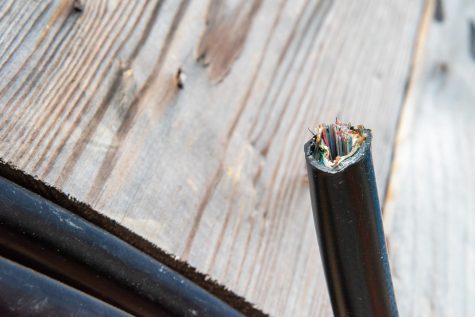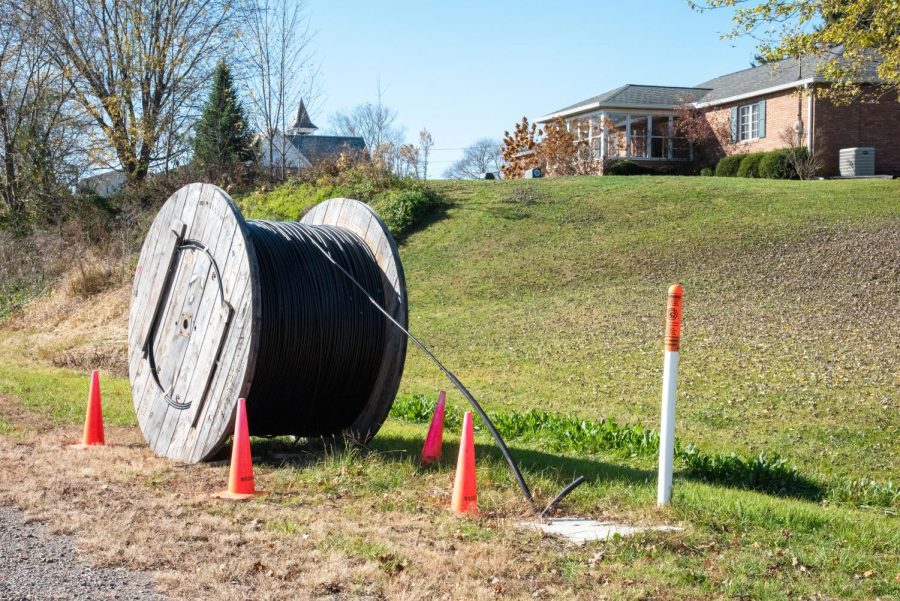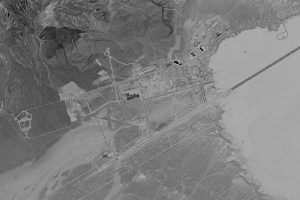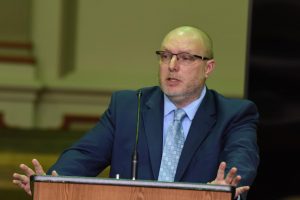Fiber-based backbone comes though Zanesville, marks massive investment
November 7, 2022
An international company known for connecting data centers and users to the internet, through its massive backbone network of fiber optic cables, is in the process of deploying a new route from Columbus to Pittsburgh, coming right through Zanesville and Muskingum County.
While there doesn’t appear to be any immediate plans for the line to connect locally, the route represents tens of thousands of dollars of investment per mile and runs directly past multiple business parks in Ohio, West Virginia and Pennsylvania.
The deployment signifies the growing need for fast, low-latency connectivity to supplement current route offerings between the region’s largest cities, providing seamless and uninterrupted flows of packets to both national and international hubs where data is routed through and stored.
Pick up your cell phone and run a Google Search or turn on your television and fire up Netflix – behind the scenes, packets of data flow from the device to the home’s router, to your internet service provider and ultimately end up at a data center ready to help process the request, this all happens at an unbelievably fast speed, so fast, in fact, it seems effortless, but the reality is its anything but.
In the 90s and early 2000s, what most average users knew as the Internet and ‘getting online’ was done so by a dial-up service, using a home phone line to call a number that then connected somewhere to a physical server. Some providers such as AOL (America Online) provided benefits like an email account so users could communicate with one another, including those around the world. By today’s standards, the speed was quite slow and would take significant time to even download a low-quality image or music file.
By the mid-2000s, providers like Road Runner (now Spectrum) offered coax cable internet through the cable line and others like AT&T offered DSL, a broadband service faster than dial-up but less capable than coax cable internet.
While the internet may seem like a virtual place, it’s physically represented as ones and zeros in massive data centers on hard drives scattered around the country and world.
Google, Facebook and Amazon, for example, each have dozens of data centers. YouTube, owned by Google, Instagram, owned by Facebook, and Prime, owned by Amazon, all have these massive facilities to deliver content to their end users who access the internet through their internet service provider (ISP) such as StarLink, Spectrum or Brightspeed.
Linking these data centers and ISPs together is millions of miles of fiber optic cable, essentially, extremely small strands of glass that light is sent through representing zeros and ones. In the leadup to the Dot-com bubble, many companies invested in deploying this fiber anticipating a massive explosion in the demand to connect to the internet and access information. Following the crash, projections outsized reality and there was enough capacity for many years of future growth. Some fiber was strung along electric polls (referred to as aerial fiber) and others were buried, mostly along rail lines.
As consumers today spend more and more time online, from making FaceTime calls to binge-watching a new Netflix series, demand, especially from the cultural shifts of the pandemic, has once again exploded. Further, there is a growing need to transfer data between data centers.
When, for example, a popular YouTuber post a video, expected to get millions of views, Google keeps a copy, or multiple copies, at each of their data centers to handle the demand they will experience for that video, allowing them to provide a seamless viewing experience comparable to cable television.
As cell phone providers, like AT&T, T-Mobile and Verizon, have gotten out of the business of physically owning their cell towers, a move that allows them to co-locate equipment on the same towers with their competitors, saving them considerable money, they follow in the footsteps of tech companies that ‘share’ a fiber optic cable, using only some of the many strands of fiber inside a line. Zayo is one of those providers.
With 16 million miles of deployed fiber, Zayo is considered a Tier 1 network, meaning it has settlement-free peering with other Tier 1 networks such as Lumen Technologies, AT&T, T-Mobile and many others.
Zayo has been considerably expanding its fiber footprint around the globe including with local deployments on its Youngstown to Pittsburgh route, its Columbus to Ashburn route and its Columbus to Pittsburgh route, all of which will be buried fiber, a more resilient type of transport, as opposed to aerial routes, which are now less desired by customers.
Zayo already has an aerial route that passes east to west through Muskingum County, but the announcement of its buried route making its way through the county, an investment of tens of thousands of dollars per route mile, is significant.
“Anytime that we can get enhanced infrastructure through the heart of Muskingum County, it’s going to be beneficial not only to our businesses but our residents,” said Zanesville-Muskingum County Port Authority Director Matt Abbott who added he wasn’t aware of any upcoming developments that will feed off the line but that it will give our county, through our business parks, an advantage at attracting development.
The Columbus to Pittsburg route will go from Columbus to Wheeling, West Virginia, then to Washington, Pennsylvania and then on to Pittsburgh. For national security concerns, Y-City News will not be publishing the exact route or where in the aforementioned cities the fiber will terminate.
In its press release, Zayo cited how the Columbus Metropolitan Area has become an ‘increasingly important data center hub.’ Facebook, Google and Amazon all have data centers in New Albany as well as other parts of the region.
Google has announced they will be building an additional data center in Fairfield County, along the Columbus to Ashburn fiber route the company also recently deployed.
The Columbus to Pittsburg route is still undergoing completion. Two fiber huts have been constructed in Ohio along the line, one in Muskingum County and one in Guernsey County. Again, for national security reasons, Y-City News has identified but is not publishing their locations.
Often, the huts will be designed as a point of presence, a spot where other telecommunication companies can connect to the line. The route gives credence to the likelihood high capacity broadband will soon become more readily available as well as the chance a data center could locate in Muskingum County. One difficulty that the county faces is that unlike other rural counties in the region, officials have been unable to attract any solar farms, something that goes hand-in-hand with attracting a data center, as the companies nearly always pledge to be fully operated by local renewable energy, often done through purchasing agreements.
The route consists of three buried PVC casings, two empty, one utilized, like in other regional routes Zayo is deploying. The fiber is made up of 288 strands, some of the highest quantity fiber commercially available. While technical capabilities are not publically available, it’s likely the line, in total, could support bandwidth in the hundreds of terabits per second.

According to Zayo, the route will give customers reduced latency and allow them to connect to Cincinnati, Indianapolis and Chicago via Zayo’s existing fiber network.
“The build is driven by a customer’s need for a physically diverse route from existing providers connecting these two strategic markets,” said a company official via a press release. “The expansion will provide a superior option for reliable, high-capacity fiber connecting data centers and contact centers in important population centers.”
This article is part of an investigative multi-story look at broadband in rural Ohio currently underway by Y-City News. Do you have information or would like to provide a comment about broadband inequity, lack of providers or difficulty getting online? Y-City News would like to hear from you. Contact us at (740) 562-6252, email us at contact@ycitynews.com or mail us at PO Box 686, Zanesville, Ohio 43701.














